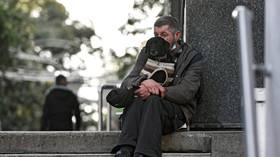New statistics reveal that number of Russians living below poverty line jumped by 400k during Covid pandemic to 19.6 million

After a year marred by Covid-19, increased living costs, and a sharp rise in unemployment, newly published data reveals that 13.3 percent of Russians lived below the subsistence minimum during the first three quarters of 2020.
That's an increase of 400,000 people compared to the same period in 2019, with the number now reaching 19,600,000 people.
The figures, published by the federal statistics service Rosstat, were calculated by measuring how many citizens received less than a certain number of rubles over the period. The data reveals that more and more Russians are struggling to make ends meet.
The difference was most stark during the third quarter of the year, when an extra 1.2 million people were earning a wage below the subsistence minimum compared to the same period in 2019.
According to Rosstat, this was mainly due to steep growth in the cost of living, as well as a particularly strong third quarter 2019. Interestingly, the department did not point the finger of blame at the coronavirus pandemic.
The subsistence minimum in the third quarter of 2020 was 12,542 rubles ($165) per month for the adult population, lowering to 9,519 rubles ($125) for pensioners, and 11,580 rubles ($150) for children.
However, like many former Soviet countries, Russia has a significant shadow economy, with the International Monetary Fund (IMF) estimating it at around 33.72 percent of GDP in 2015. Therefore, some of those living below the official poverty line are likely to have had extra 'black' income.
The latest figures come in the same week as Rosstat revealed a considerable fall in the Russian population, with the number of permanent residents in the country dropping by more than 510,000 people in just one year. The rapid decline has been blamed primarily on the coronavirus pandemic, with increased deaths, falling birth rates, and decreased immigration also contributing.
Also on rt.com Russia's population decline accelerated in 2020, losing 500,000 residents amid Covid deaths, falling birth rate & less immigrationThe country also recorded a fall in real disposable income, with the Covid-19-impacted second quarter of 2020 displaying the steepest drop since the 1990s.
In October, President Vladimir Putin pledged that the country's poverty rate would be halved in the near future.
"According to the latest data, there are around 20 million [people below the poverty line], and in the 2000s, there were more than 42 million," Putin said at an investment forum. "So, we have cut it in half. In the coming years, we will reduce it again, I am sure of that, by another half."
Like this story? Share it with a friend!













